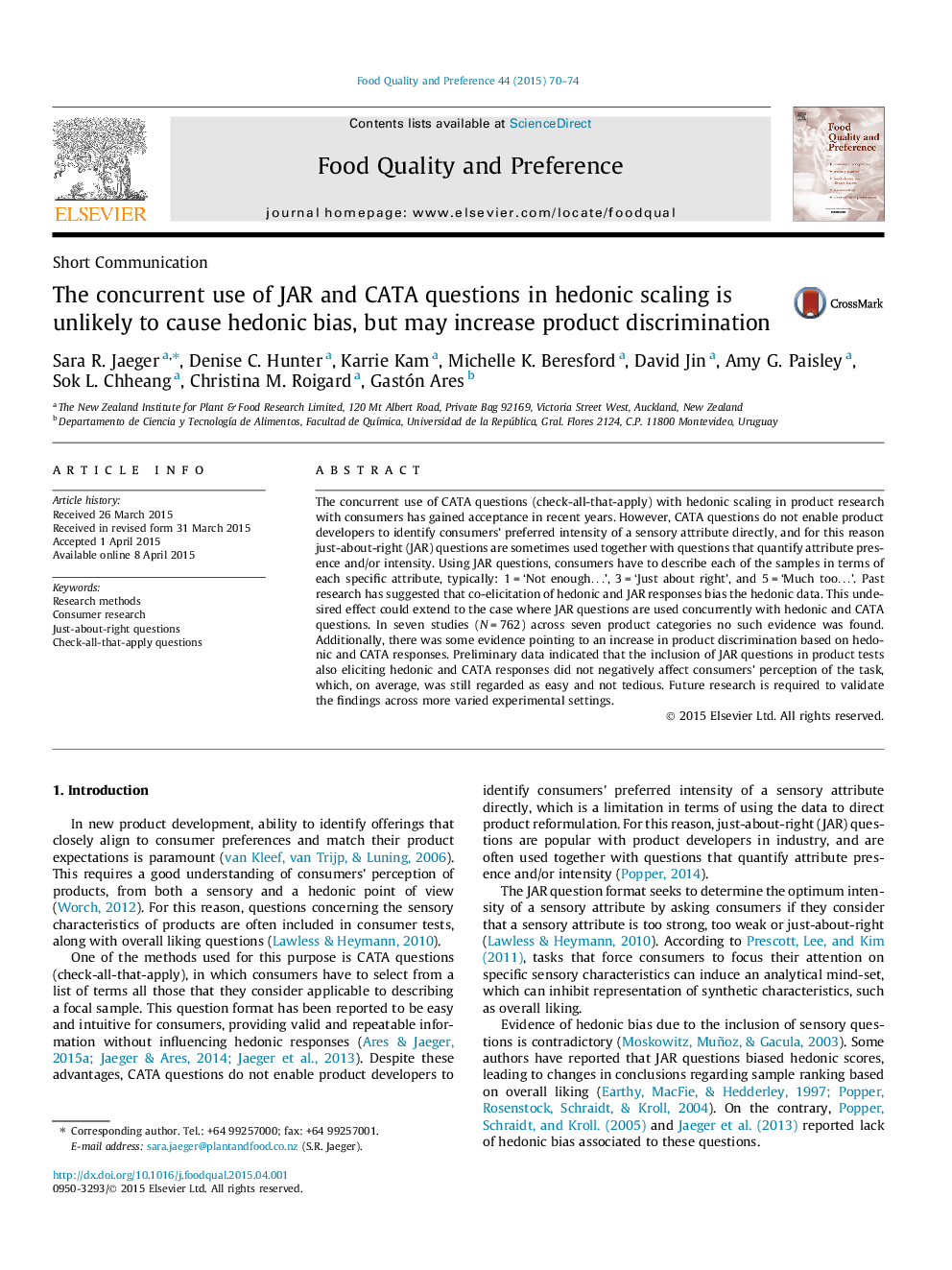| Article ID | Journal | Published Year | Pages | File Type |
|---|---|---|---|---|
| 6261338 | Food Quality and Preference | 2015 | 5 Pages |
â¢The influence of JAR questions on hedonic and CATA responses was evaluated.â¢Hedonic scores were not affected by concurrent use of JAR and CATA questions.â¢JAR questions increased sample discrimination of hedonic scores and CATA responses.
The concurrent use of CATA questions (check-all-that-apply) with hedonic scaling in product research with consumers has gained acceptance in recent years. However, CATA questions do not enable product developers to identify consumers' preferred intensity of a sensory attribute directly, and for this reason just-about-right (JAR) questions are sometimes used together with questions that quantify attribute presence and/or intensity. Using JAR questions, consumers have to describe each of the samples in terms of each specific attribute, typically: 1 = 'Not enoughâ¦', 3 = 'Just about right', and 5 = 'Much tooâ¦'. Past research has suggested that co-elicitation of hedonic and JAR responses bias the hedonic data. This undesired effect could extend to the case where JAR questions are used concurrently with hedonic and CATA questions. In seven studies (N = 762) across seven product categories no such evidence was found. Additionally, there was some evidence pointing to an increase in product discrimination based on hedonic and CATA responses. Preliminary data indicated that the inclusion of JAR questions in product tests also eliciting hedonic and CATA responses did not negatively affect consumers' perception of the task, which, on average, was still regarded as easy and not tedious. Future research is required to validate the findings across more varied experimental settings.
